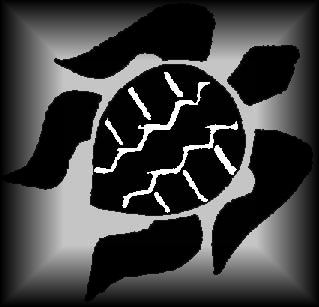
The Kefalonian Marine Turtle Project
 |
The Kefalonian Marine Turtle Project |
This page outlines some of the work that KMTP volunteers
have done in the past -
PLEASE NOTE - NO
more vounteers are required until further notice.
Introduction
Tell me more!
What does volunteering involve?
![]() A day in the life of a KMTP volunteer
A day in the life of a KMTP volunteer
INTRODUCTION
Volunteer
opportunities
Each year from 31st May to the 17th October, the KMTP invite members of the
public, over 18 years of age, to become involved in sea turtle research. .
As with many other sea turtle programmes, a volunteer on the KMTP has the rare opportunity to see turtles nesting and hatching, and to get experience in practical fieldwork. Volunteers are required to cover their expenses and the conditions can at times be tiring, rustic and challenging. The project relies on the skills and enthusiasm of the volunteers to fulfil all the scientific and conservation objectives - hard work but ultimately extremely rewarding, and volunteers can expect to leave the island with technical experience and a wealth of environmental, scientific and turtle knowledge.
Do you think you have what it takes?! Read on...!
The
turtles
The Kefalonian Marine Turtle Project researches and conserves loggerhead
turtles (Caretta caretta) that nest on the Greek island of Kefalonia.
Check out the EuroTurtle page at: http://www.euroturtle.org/outline/logger.htm
History
and background of the KMTP project
View the Introduction page for more information
TELL ME MORE!
Where will I
be based?
The project is based near to Mounda beach, the main nesting beach for
loggerhead turtles on the island of Kefalonia in the Ionian Sea, west of mainland
Greece. The climate during the summer is generally very hot and dry, with temperatures
around 30-35 °C, with the occasional summer storm.
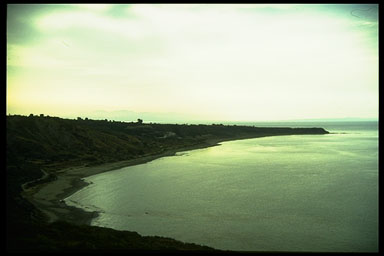
Figure 1. Mounda beach, Kefalonia (Photo. C. Morris, 1996).
Accommodation is in three shared villas with bathroom, kitchen and veranda with a studio office and equipment store. The buildings are situated in the village of Ano Katelios, around 2 kilometres from the village of Katelios and the nesting beach, and a few more km away from the tourist town of Skala.
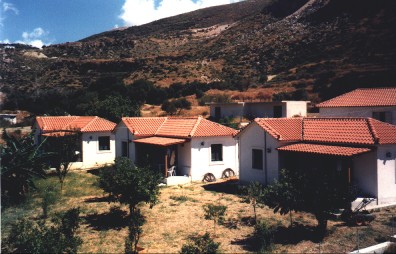
Figure 2. KMTP field centre (Photo. C. Morris, 1996).
Go to the Introduction page to find out more about location and accommodation.
Who
can participate?
Participants come from all walks of life, all having a common interest
in the conservation and future of endangered turtles. Science graduates or those
with relevant degrees are preferred, but there is by no means a hard and fast
rule as to who can apply. Most people have some skill that they can contribute
to the project i.e. Public Relations knowledge. A desire to learn and a willingness
to muck in are also very important attributes - previous project experience
is an advantage.
The work is physically strenuous - The main challenge is to keep awake for long periods and to walk around 10 km per night over soft sand. Applicants should be physically fit and prepared for the rustic lifestyle.
A knowledge of Greek and the Greek culture is a definite plus..
When
does it take place?
The season runs from the end of May until mid-October; the early part
of the season involves work with nesting females and the latter with emerging
hatchlings.
Volunteers are required to work for a 5 week period (this includes one week of training), although this can be flexible i.e. if you are only available for 4 weeks then you will still be considered for selection.
Volunteers are divided into 8 groups with 8 members in each. The dates of each group are shown below:What
about free time?
At the end of the training week there is an opportunity to dive at
the Greek Diving Centre in the village of Fiskardo. The school caters for complete
beginners to experienced sports divers. (Note the cost of this has to be met
by the individual). In addition to this each volunteer will get two days off
during each day work week (4 days in total) to explore the island and surrounding
area.
How
much will it cost?
The price of participation is £550 for five weeks. This price covers
food, accommodation and a five-day training course on sea turtle biology and
conservation upon your arrival on the island. Each volunteer will be expected
to help cook. Meals tend to be simple and traditional but healthy and tasty.
However, applicants should note that this price is exclusive of travel
to and from Kefalonia.
There is also the possibility of subsidised flights, but for now, expect to pay the full fair. You must organise your own travel arrangements to the island, but the project co-ordinators are happy to suggest the cheapest and easiest routes.
All
in a night's work...
A typical night on the beach starts at 10 p.m. and finishes at dawn,
between 6 and 7 a.m.
During the nesting season (June to mid-August), volunteers walk regular patrols up and down the beach, looking for signs of nesting females. Patrols start in the middle of the beach and two small groups walk, by the shore, quickly to either end of the beach. The walk takes about 20 minutes, the groups then wait for 20 minutes before returning. This time scale ensures that no female can be missed because the whole nesting procedure takes at least 1 hour.
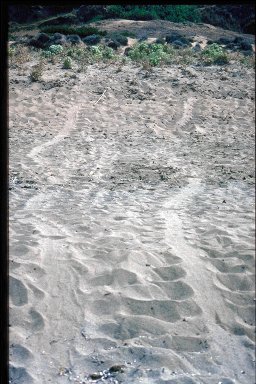
Figure 3. Distinctive turtle tracks after a night-time nesting - nest positioning/recording takes place shortly after dawn.
If tracks are found then a volunteer will crawl carefully up behind the turtle to see if she has started laying. Once she has started laying the turtle goes into a "trance-like" state and then group members will assist in taking measurements of the female, whilst checking for disease and damage to the carapace. The number of eggs are counted and a sample are weighed and measured. The female will also be tagged if she is not already and several individuals are fitted with radio transmitters. Once the data has been collected, volunteers wait behind the turtle until she returns to the sea, the position of the nest is then recorded.
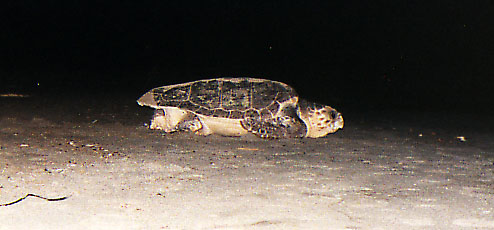
Figure 4. A loggerhead turtle returning to the sea after laying its nest (Photo. T. Stringell, 1996).
During the hatchling season, patrols continue while females may still be nesting. Data is collected on the emerging hatchlings, including numbers that successfully reach the sea. Additionally, orientation data is collected to monitor the effect of artificial beach lighting as they make their way down the beach. After there has been no activity at the nest for a number of nights, the nest is excavated to calculate the levels of infertility and the number of eggs which successfully hatched.

Figure
5. A KMTP volunteer viewing recent hatchling tracks. Note the close proximity
of the sun-bed
(Photo. T. Stringell, 1996).
Other duties on the beach will include taking tourists on patrols and telling them about the turtles and the project.
All
in a day's work... some typical tasks!

Figure 6. Radio tracking in the south of Kefalonia.
Tourist talks and slide shows are held in local bars and hotels to raise awareness. At these talks we also arrange for tourists to come and spend a night on the beach - by getting tourists involved, we get more support for the project.
We ask that you fill out the On- line Application Form , which will automatically be emailed to us.- no longer available
Our postal and email addresses can be found at the bottom of most pages.
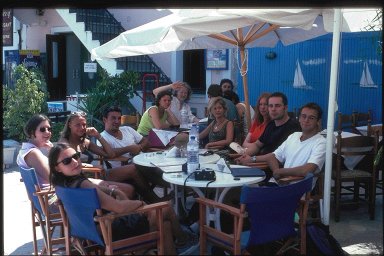
Figure 7. Some of the volunteers from the 1997 season
If readers of this page wish to contact the KMTP, they can do so via
or
T. B. Stringell tstringell@hotmail.com